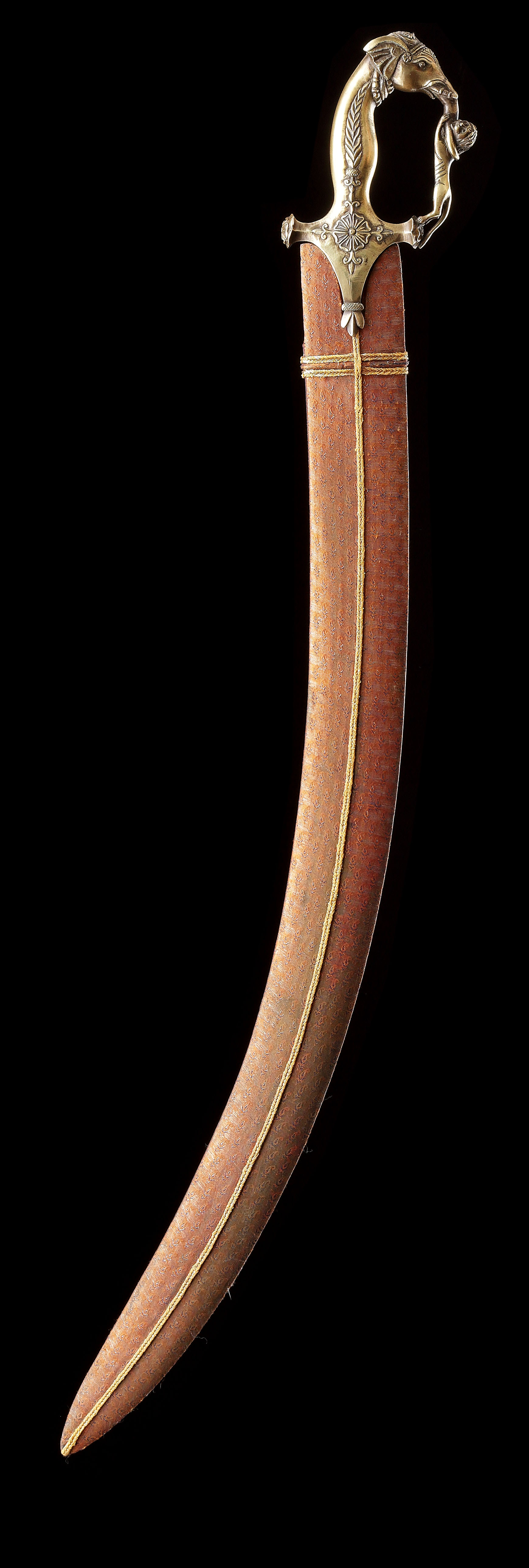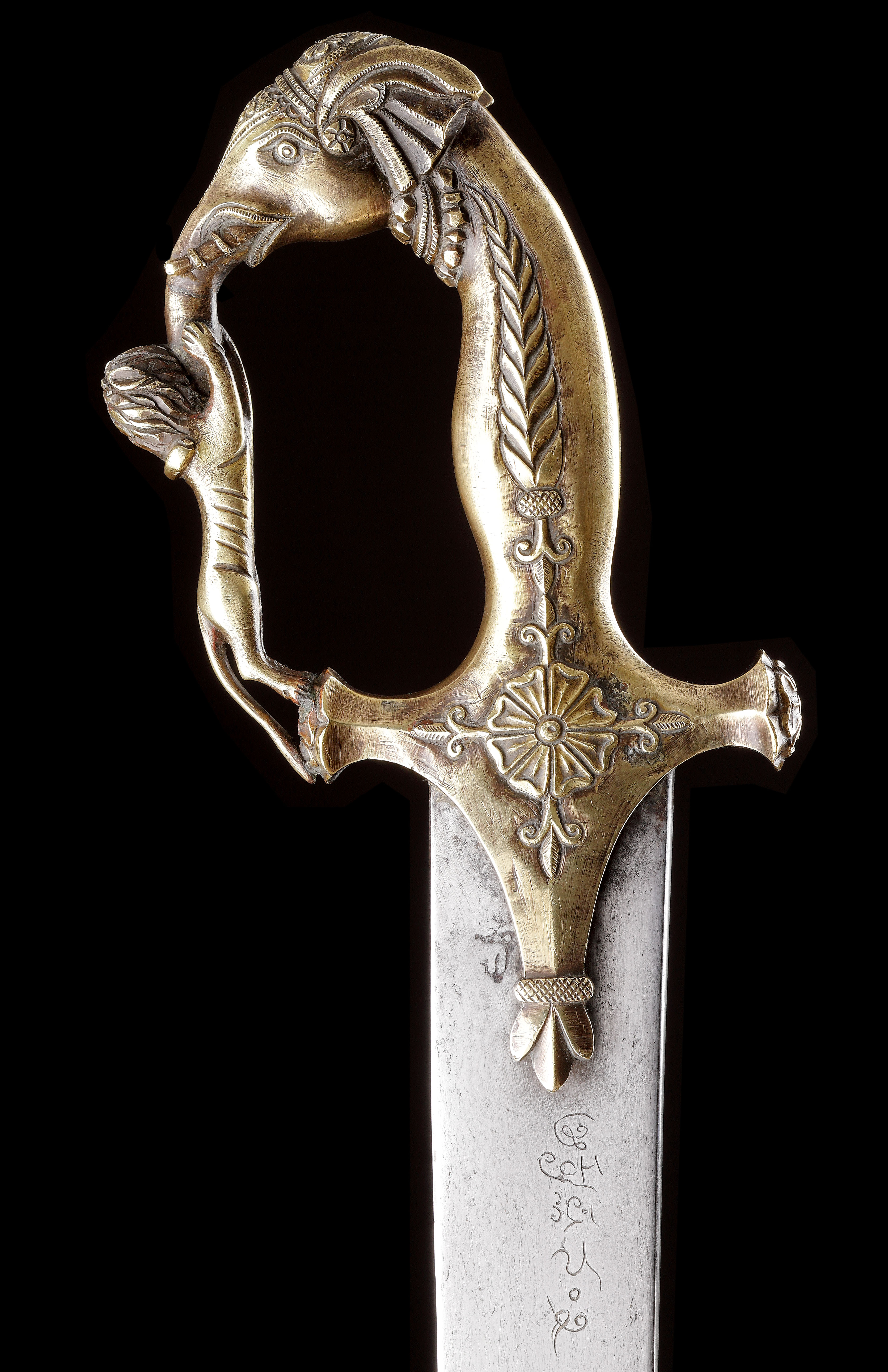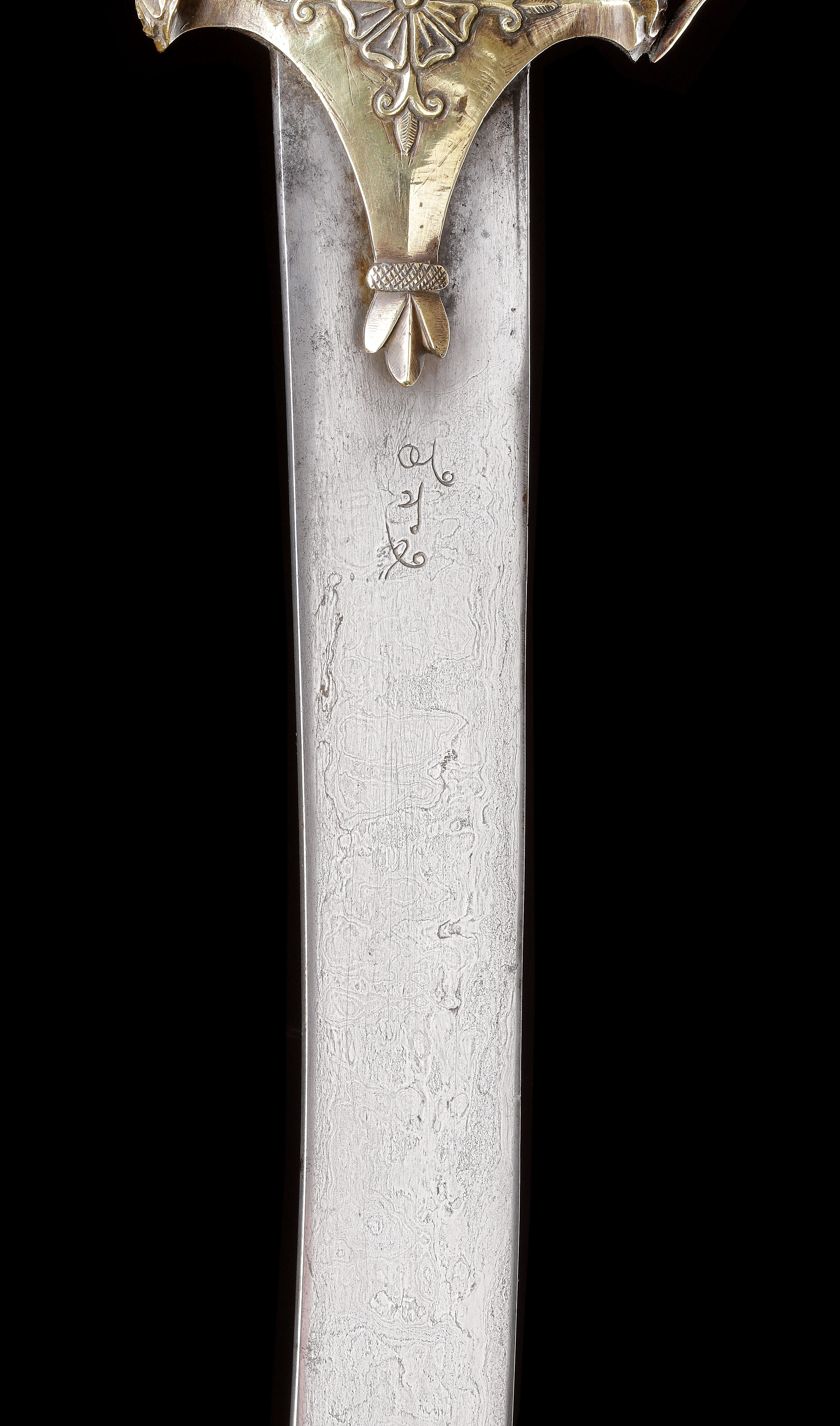TEGHA
Rajasthan / Mysore (India)
19th century
Total length: 830mm
A brass-hilted Rajput steel sword (tegha) from the Mysore armoury. This sword probably entered the Mysore armoury in the 19 th century via cordial relations rather than conflict and was inscribed in the local language of Kanada on both sides of the blade by Sri Krishna Wodeyar III (Maharajah of Mysore 1799-1868) as part of an inventory of the armoury he caried out:
Side 1: Shri Krishna (referring to Sri Krishna Wodeyar III) S(a)m 3 (number 3)
Side 2: Tegha 3
The sword has a wonderful balance and the single-edged curved pattern-weld blade becomes slightly wider before tapering to a point. The brass hilt is in the form of an elephant and lion in combat, the elephant-head pommel with trunk forming the upper part of the knuckle-guard, the lower part of the knuckle-guard in the form of a lion, with rosette quillons. The body of the hilt is engraved and decorated with foliate and floral motifs. The sword is housed in a later wood scabbard clad in orange silk with vegetal motifs.
A closely related sword, also Rajput with an elephant hilt and blade having Mysore inscriptions, is now in the Met Museum (36.25.1325).
My thanks to Marina Viallon for pointing out the Met example and to Nidhin Olikara for a translation of the inscriptions.






